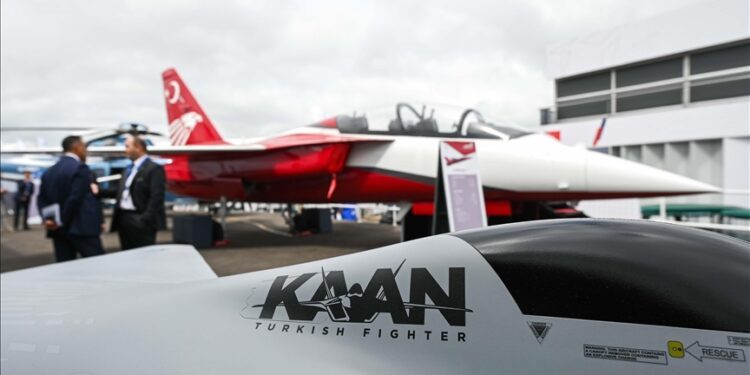LONDON
The aerospace industry’s leading players on Monday gathered at the Farnborough Airshow, one of the world’s premier aviation events, as they grapple with unprecedented demand.
The 5-day event, located southwest of London at an airport typically used for private jets, is expected to attract some 75,000 visitors and 1,200 exhibitors.
Held biennially, Farnborough rivals the Dubai and Paris airshows in significance, providing a critical platform for companies to showcase their latest defense hardware and lower-emission aircraft.
A central feature of the airshow is the traditional face-off between US aerospace giant Boeing and European competitor Airbus, both vying for multi-billion-dollar jet orders.
However, both companies are currently focusing on resolving production issues to meet the surging demand, with orders for nearly 15,000 aircraft—a year-on-year increase of 18%—awaiting fulfillment.
The International Civil Aviation Organization (ICAO) projects that global air travel could triple by 2050, potentially increasing carbon dioxide emissions from around 500 million tons to over 1.5 billion tons if no technological advancements are made.
This looming environmental challenge casts a shadow over the airshow, especially significant in light of the record English heatwave during the 2022 event. Despite this, Airbus and Boeing continue their intense competition for airline orders.
Boeing has faced a series of crises, starting with the two fatal crashes of its bestselling 737 Max in 2018 and 2019, resulting in 346 deaths.
The company recently faced another setback when a door panel blew out during an Alaska Airlines flight in January, although this incident fortunately resulted in no injuries.
Earlier this month, Boeing pleaded guilty to criminal charges of violating a plea deal related to the 737 Max crashes. A robust order book at the Farnborough Airshow could be pivotal in helping Boeing revive its turnaround efforts.






